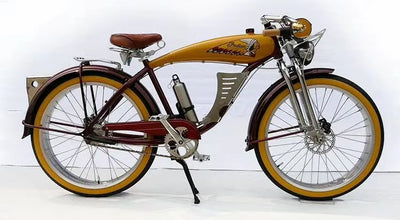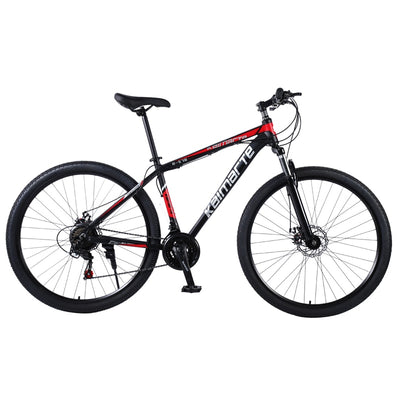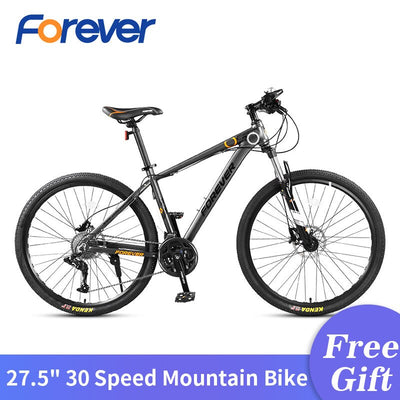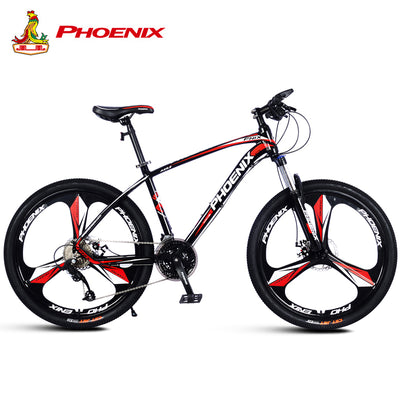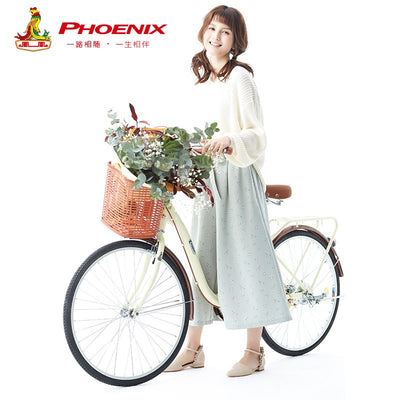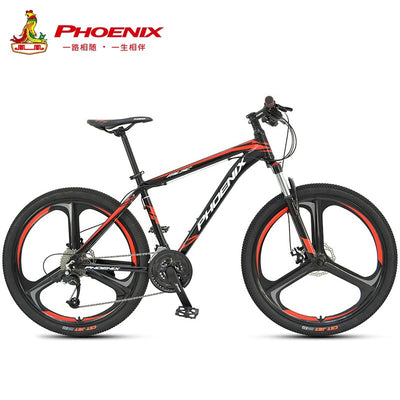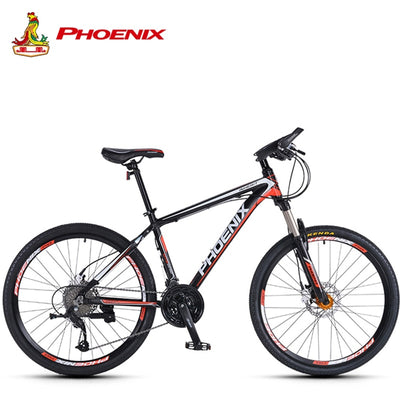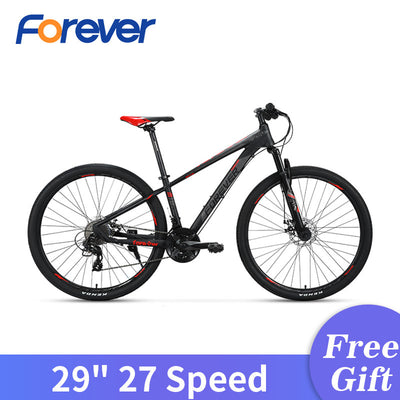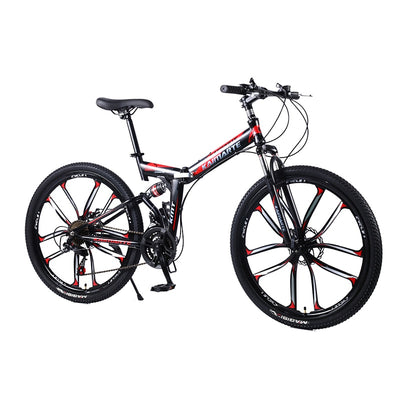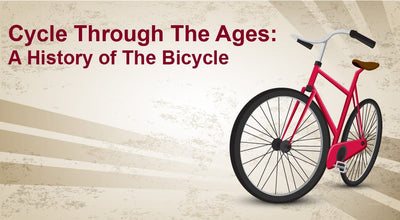Buyer's Guide To City and Hybrid Bikes
Posted by Tom Lee on
Looking for an easy and affordable way to enjoy get outside for fitness - and fresh air? Wishing you could find a stress-free and more manageable approach to running errands? Want a new outlet for commuting, or recreation, that is less aggressive than a traditional road bike but still lightweight and sporty and fun to ride?
These are the reasons many people choose a City or Hybrid bicycle. But this isn't your mom or dad's old bike. Older "vintage" bikes are often made of steel, fewer gears, and slower and heavier to ride. Advances in the engineering of bicycles and bicycle frames make these bikes faster, more responsive, and generally more fun to ride than what you might have experienced 10 or 15 years ago.
Read the guidelines here to learn more - and feel free to call with any questions. Even better, visit our store to see the different models, ask our staff about the type of bike that might be best for you, and try a few out for yourself. Nothing makes the decision easier than taking a few out for a test ride!
Start With These Questions
Here are a few easy questions/considerations to help you select the best bike:
- Where do you plan on riding?
- Is top quality a priority, or is affordability more important?
- Do you plan to lock your bike up on the street?
- Do you consistently select high-tech gadgets or do you prefer practical, simpler designs?
- What is your budget for this purchase? (This is an easy way to narrow down the selections.)
- What type of riding do you plan to do?
The last question is one of the best ways to determine which bike type is the correct choice. If you envision leisurely Sunday rides up the West Side Highway, occasional outings with friends in search of the perfect picnic spot and having fun while you exercise, commuting to or from work in a low-key experience, or running errands with a bike that is lightweight and easy to maintain, a hybrid or city bike is a great choice.
There is some variation within the models, to accomodate your preferences. Cruiser or comfort bikes will be slower, but have a vintage appeal and their step-through features, suspension systems, and cushier saddles are friendlier for people less flexible or comfortable with their feet too far from the ground.
If you're looking to commute, city and commuter bikes offer features such as racks, fenders, lights, bells and kickstands - all you need to be equipped for the streets, and tow your belongings.
If you plan to ride longer distances, climb hills and work a bit to get in better shape, you still want to be comfortable, but you're interested in lightness, nimble handling and even easy climbing, hybrid bikes are a perfect fit. A versatile jack-of-all-trades, hybrids are lighter and roll and pedal more easily than comfort bike. Some hybrids are designed for occasional off-road (trail) use, too.
Tires
So what other features vary between models? Tires are a simple but visible difference.
Comfort and cruiser bikes usually have a 26-inch tire standard commonly found on mountain bikes. These wide tires provide a comfortable cushion of air so you float over bumps and rough terrain. Plus, it's possible to install knobby tires should you want to ride most of the time on dirt roads. 29er bikes have a knobby, mountain-style tire but in a 29-inch size.
Hybrid and city bikes usually (but not always) use the Road bike's 700c tire standard. These are lighter to roll more easily on pavement for easy acceleration and climbing. There are 700c tires in different widths and treads for riding on all surfaces.
Besides this wheel difference, there are other distinguishing characteristics to understand that we explain in the following chart:
|
Comfort and Cruiser Bikes |
Hybrid and City Bikes |
|
Frame designed mostly for comfort |
Frame designed for comfort and efficient pedaling |
|
Upright riding position and handlebars |
Adjustable components offer upright comfort or a more speed-oriented position - your choice |
|
Suspension adds weight but |
Suspension varies; in general, lighter components for easier pedaling |
|
Seats with springs, gel and foam provide luxurious seating |
Soft, sleek seats are comfortable and allow movement for sportier riding or distance |
|
High air volume in the tires provides plush ride |
High air pressure in the tires makes higher speeds and long rides easier |
Frame Materials
The frame is the backbone of any bicycle and, like other bike models, these bikes feature a variety of different frame materials. Here's how they compare:
-
Aluminum frame
PROS: Light, strong, affordable, rust/corrosion resistant, great ride
CONS: Somewhat heavier than carbon -
Carbon-fiber and Carbon/aluminum mix frame
PROS: Lightest, strongest and rust/corrosion resistant, smooth ride
CONS: Most expensive
Suspension
A common feature on some of today's comfort bikes is a suspension fork (photo at right). These compress to absorb impacts from bumps, cracks, ruts and obstacles. This insulates you from jolts for a smoother and more comfortable ride and ensures that you remain in control even over rough surfaces.
For riders looking for a more aggressive ride than a comfort bike, but the versatility of a city bike, we recommend 29er bikes. They are tough, and great for the road - and for having a little fun, too, while riding on and off curbs or other city environments.
Suspension seatposts are another excellent feature found on many Comfort bikes and Hybrids. They smooth rough terrain and pothole-covered roads absorbing vibrations. Keep in mind that, should you find a bike you love that doesn't have a suspension seatpost, it's usually possible to add one, too (sold separately).
Gearing
Some of the greatest advances in bicycle technology have been in gearing. On modern bikes it's easier than ever to change gears and this means it's easier to ride than ever, too.
This is one of the reasons why we recommend thinking about where you plan to ride your new bike. If where you ride is pretty flat, such as around lower Manhattan or up the West Side Highway, you can get by on a bike with fewer gears (or even a singlespeed) than if you plan to ride rolling or hilly terrain, such as in the Bronx, over the Brooklyn Bridge, or up the hills in Park Slope. This is where having a few gears comes in handy!
Regardless of which gearing you choose, modern bikes shift with a simple push of a button-style lever. Also, most Comfort and Hybrid bikes even show you exactly what gear you’re in - no more worrying about what gear you might be in.
Brakes
Most Comfort bikes and Hybrids are equipped with rim brakes called linear- or direct-pull brakes (photo) or hub brakes, which are integral to the front and/or rear wheel hubs.
You may also see some bikes, such as 29ers, featuring disc brakes, the newest brake type, which sport calipers and rotors at the center of the wheels. Disc brakes are popular for offering more braking control in descents, and can perform better in muddy situations.
Hub brakes are usually found on bicycles designed for less rigorous riding and are more designed for durability and low maintenance than extreme-conditions stopping power.
In general, any given bicycle will have brakes suited to the riding use it was designed for. For example, linear-pulls are powerful stoppers and excellent for all-round riding, from casual neighborhood rambles to commuting every workday, even in nasty weather.
Keep in mind that there's nothing like a test ride to feel the difference in brakes and see what you like best. We can also make recommendation based on the riding you plan to do.
Seats
Saddles offer perfect ergonomics, materials and features to make them comfortable, versatile and supportive.
You'll find anatomical shapes, cutouts to eliminate pressure on soft tissue (which prevents numbness and pain), flexible frames, gel padding and cushioning springs. Sometimes, all of these things in the same seat, even.
Still, the most important thing is making sure that the seat on the bike is the right one for you. Everyone's different so you should sit on the seats and try them out to make sure that they're right for you (we can easily swap seats, too). And, even on a great seat, it takes a few rides to get your body used to riding, so be sure to pedal for a few days before judging your new throne.
We’ll Make It Fit Like A Glove
It can be confusing to know your size in bicycles. While road bikes sizes are named such as 52, 54 or 60, hybrids and commuter bikes are usually either small/medium/large, or 15", 17.5" and 20". As bicycle engineering has changed, size terminology has changed too. Don't worry - we'll help you be sure it fits properly.
Get Ready to Ride!
Don't forget about the accessories you need for the road or bike path.
- In New York City, a bell and front and rear lights are required.
- You will also want to plan for a helmet purchase. Please note that helmets weaken with age - for your own safety, you shouldn't ride in an old, worn-out one.
- And of course, you'll also want a good lock!
Lastly, while not necessary, it's a good idea if you're going to be riding far from a repair shop to pick up a spare tube, tire levers and a portable pump so you can fix a flat tire if you should encounter one.
Miscellaneous accessories for fitness and commuting include all-weather cycling pants and jackets (our urban clothing is stylish but includes reflectors for night-riding!), cycling shoes to boost your pedal power, stylish, padded gloves, and waterproof, functional panniers or baskets for toting your belongings or a change of clothes.
We look forward to showing you our selection bikes. Browse our catalog ("shop", above) and/or come on in. We genuinely want you to enjoy your cycling experience - and our wide selection and knowledgable staff is here to help you make a decision you'll be thrilled with.

